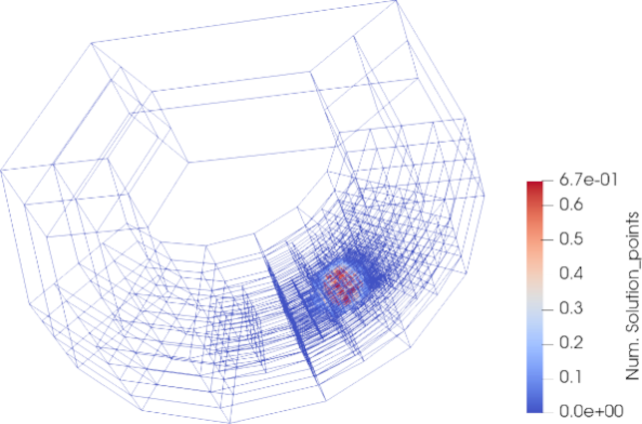Joint Lab Exascale Earth System Modelling
The Joint Lab Exascale Earth System Modelling (JL-ExaESM) enables exascale simulations and develops data handling concepts in order to achieve a breakthrough in the simulation of regional to global climate change, extreme weather events, and the impact on society and ecosystems.
The Joint Lab ExaESM leverages co-design between computer scientists and domain scientists to address the scientific and methodological challenges of Earth system science using simulation and data analytics methods which exploit the exascale capabilities of future supercomputers.
By adopting modern IT concepts for flexible scheduling and federated, hierarchical data management, the flexibility of Earth system model configurations will be increased. In addition, the time-to-solution, encompassing the entire simulation and data analytics chain, will be reduced.
In the JL-ExaESM, scientists from nine Helmholtz institutions work together. The work is splitted in two main activities. The first activity is looking at Exascale Code Scalability. The second activity is looking at Exascale Workflow Scalability of ESM applications.









3rd ESiWACE3 Hackathon - announcement
On 21–23 October 2025, the 3rd ESiWACE3 Hackathon will take place at the Jülich Supercomputing Centre (JSC) in Jülich, Germany. Titled “Porting Earth System Models to the First EuroHPC Exascale System (JUPITER),” this event supports researchers and developers preparing their Earth System Models (ESMs) for Europe's first exascale supercomputer.

JointLab Coffee Meeting
Informal meeting every 5-6 weeks for spreading information about technical developments, updates on projects, upcoming conferences and funding calls between JointLab members. Additionally short presentations on exascale topics will be given. Everyone is welcome to present something. Next date: 14.02.25.

JETI at TOP500
Completion of JETI, the second module of JUPITER. The current JETI pilot system contains 10 racks, which is exactly 8 percent of the size of the full system. In a trial run using the Linpack Benchmark for the TOP500 list, JETI achieved a performance of 83 petaflops. With this performance JETI ranks 18th on the current TOP500 list (Nov. 2024) of the world’s fastest supercomputers, doubling the performance of the current German flagship supercomputer JUWELS Booster, also operated by JSC.At the same time, JETI is highly energy-efficient, securing a 6th position on the Green500 list (Nov. 2024) of the most energy-efficient supercomputers.
